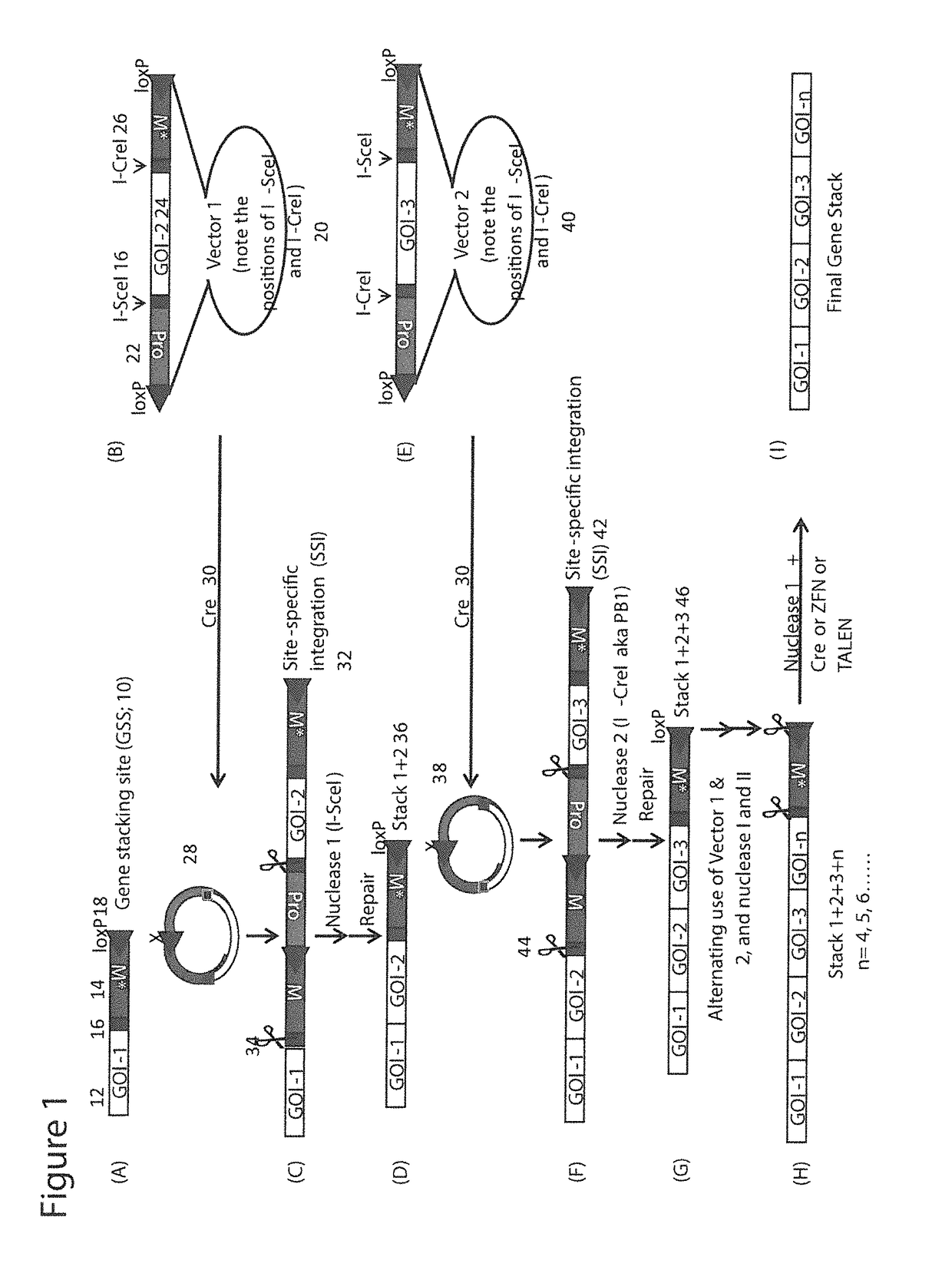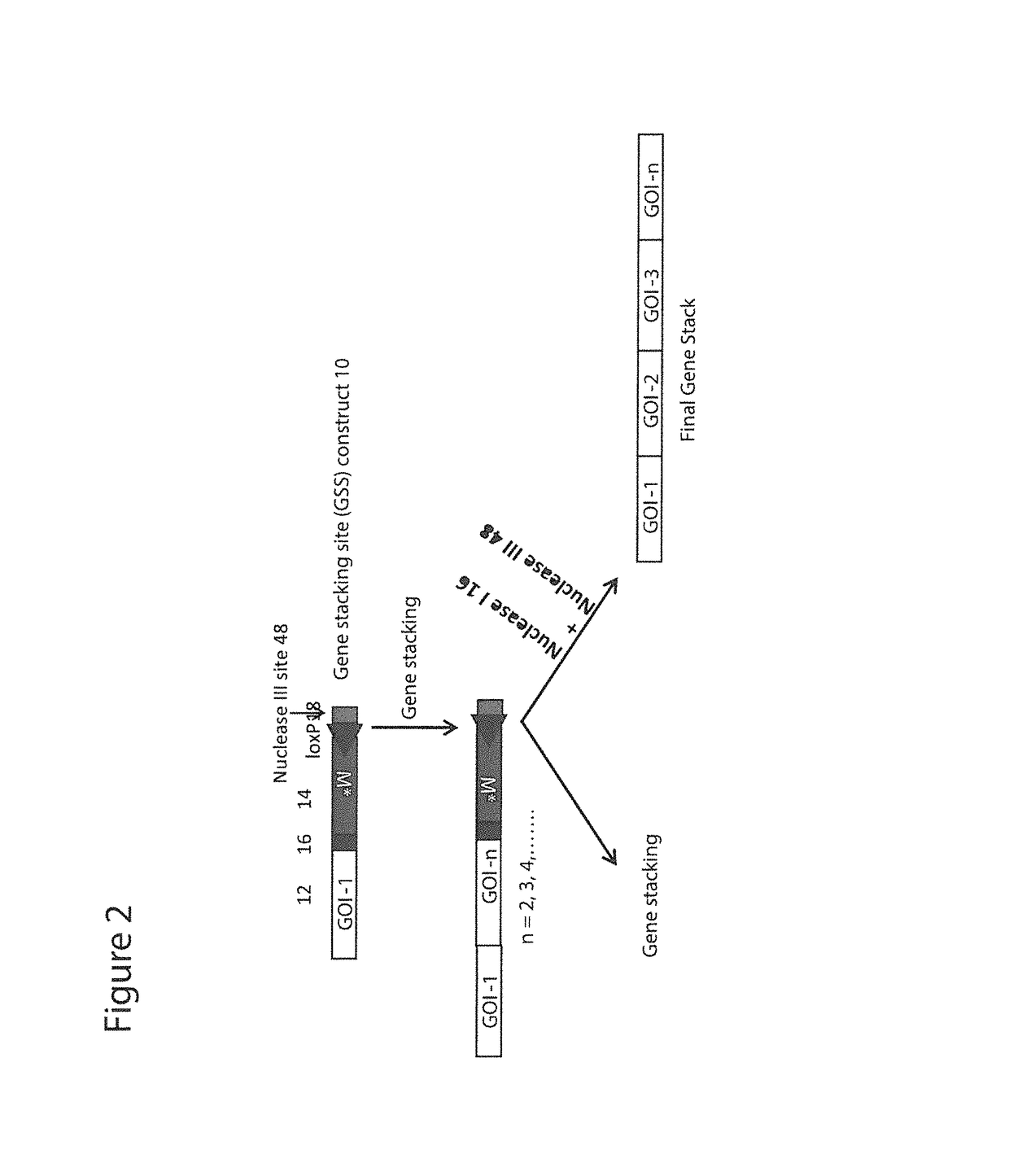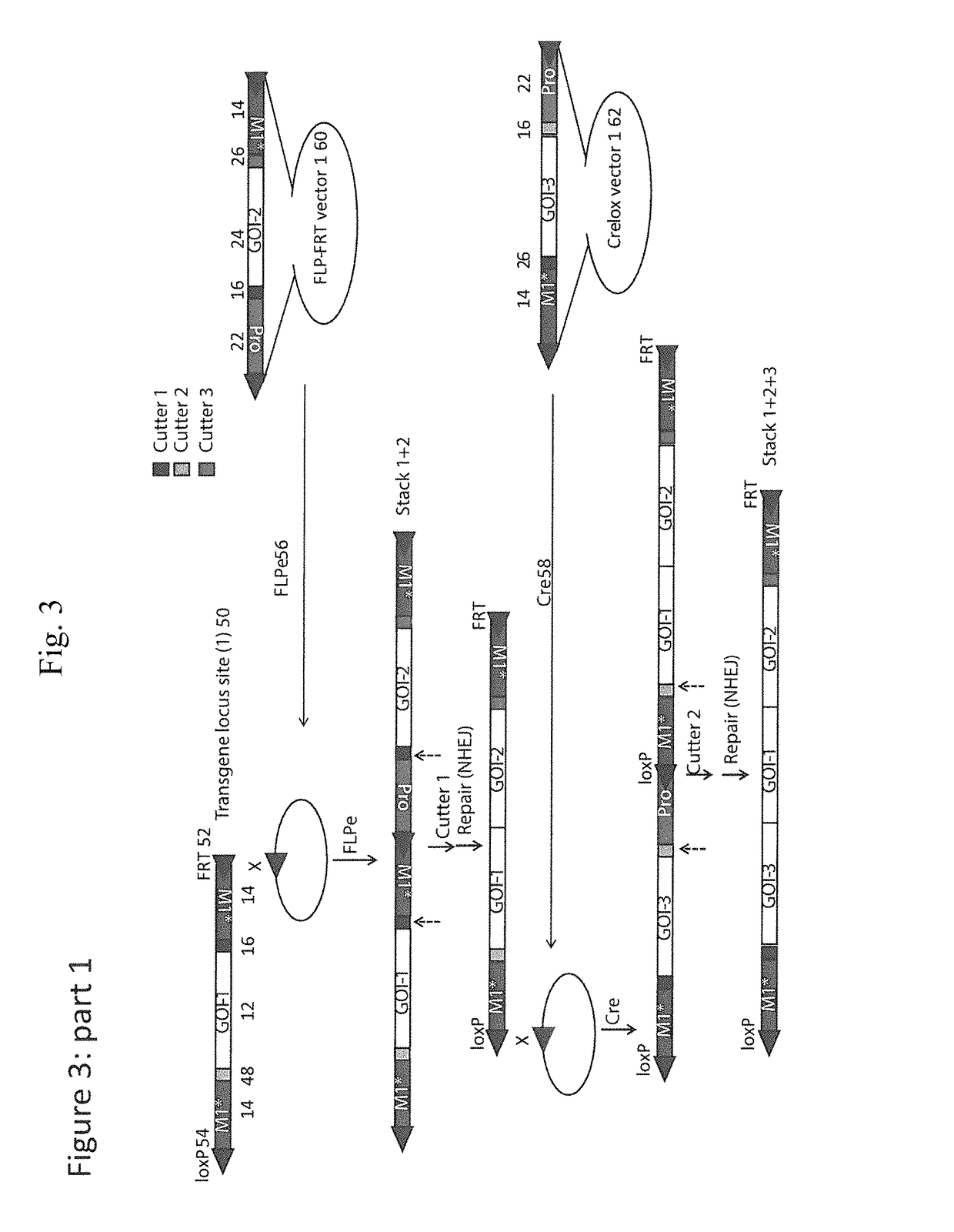Method, vectors, cells, seeds and kits for stacking genes into a single genomic site
a genomic site and gene technology, applied in the field of biotechnology, can solve the problems of silencing one or more genes, impracticality of traditional methods, etc., and achieve the effect of contributing to the stabilization of gene expression
- Summary
- Abstract
- Description
- Claims
- Application Information
AI Technical Summary
Benefits of technology
Problems solved by technology
Method used
Image
Examples
examples
Material and Methods:
[0058]DNA Vectors:
[0059]Four DNA vectors, pNS26, pNS27, pNS29, and pGSS1 were developed. The pNS series are gene stacking vectors for site-specific integration into target lox sites, and the pGSS1 is a target site vector to develop lox target sites in rice genome. pNS26 and pNS29 allow site-specific integration of a fully operable selection marker gene: hygromycin resistance gene [HygR (35S:IIPT:nos3′)] in pNS26 and geniticin resistance gene [GenR (35S:NPT:nos3′)] in pNS29 [FIG. 5(a)]. These marker genes are flanked by I-SceI recognition sites followed by fully a operable GFP gene (synthetic Green Fluorescent Protein) as a gene-of-interest, a multi-endonuclease site (MES) and a promoter-less neomycin phosphotransferase gene (*NPT). The MES contains recognition sequences for three endonucleases: I-CreI, I-CeuI, and CCR5 ZFN to allow marker removal during gene stacking by anyone of these endonucleases. Next to *NPT, an FRT site is located for allowing site-specifi...
PUM
| Property | Measurement | Unit |
|---|---|---|
| insect resistance | aaaaa | aaaaa |
| structure | aaaaa | aaaaa |
| fragment sizes | aaaaa | aaaaa |
Abstract
Description
Claims
Application Information
 Login to View More
Login to View More - R&D
- Intellectual Property
- Life Sciences
- Materials
- Tech Scout
- Unparalleled Data Quality
- Higher Quality Content
- 60% Fewer Hallucinations
Browse by: Latest US Patents, China's latest patents, Technical Efficacy Thesaurus, Application Domain, Technology Topic, Popular Technical Reports.
© 2025 PatSnap. All rights reserved.Legal|Privacy policy|Modern Slavery Act Transparency Statement|Sitemap|About US| Contact US: help@patsnap.com



